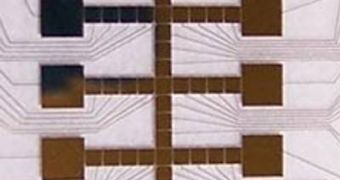The chemical heparin, which is now widely used in hospitals in order to prevent blood clots, is one of the most common such substances in the world. Worldwide, the heparin market is estimated at around $6 billion, but the invaluable chemical, used in everything from daily dialysis to brain and open-heart surgeries, is still made the way it was 90 years ago, from pig intestines. Thanks to a new microfluidic chip, the first artificial cellular organelle was created, which will help researchers understand the intricate mechanisms inside the human cells that produce heparin.
One of the main reasons why experts are so eager to discover the heparin-producing mechanisms is the fact that the current supplies obtained from pigs are very easily contaminated. Last year, such an infection, which originated from a batch of sick animals, led to the death of scores of people, Technology Review reports. But all scientific attempts at recreating the compound in the lab have failed, which means that we are still now dependent on the animals for our very survival.
The new device, built by experts at the Rensselaer Polytechnic Institute, in Troy, New York, is destined to fulfill this exact mission – to assist researchers in probing as deep as possible into the cell, until the mechanisms used in heparin generation are revealed, analyzed and understood. Once this goal is completed, artificial methods of replicating it will undoubtedly be set in motion immediately. In the cells, biologists have managed to determine that the structure involved in producing the compound is called the Golgi apparatus, responsible for “processing and packaging” proteins for the transport out of the cell.
“The Golgi was discovered over 100 years ago, but what happens inside it is still a black box. Proteins go in, glycoproteins come out. We know the enzymes that are involved now, but we don't really know how they're controlled,” Rensselaer biotechnologist Robert Linhardt, the lead author of a new scientific study accompanying the device, published in the latest issue of the Journal of the American Chemical Society (JACS), explains. The expert has been studying heparin for the last three decades.
Speaking about the new device, he says that, “We can essentially control the process, like the Golgi controls the process. I think we have a truly artificial version of the Golgi. We could actually design something that functions like an organelle and control it. The next step is to make more complicated reaction combinations.” Basically, a trial-and-error set of combinations awaits the scientists, who hope that they will eventually be able to achieve the correct set of combinations that recreates precisely what is happening inside the Golgi strcuture.
“People have had bits and pieces of the toolbox for making these important carbohydrates, but one thing you should potentially do is try to emulate nature, or at least figure out how it works. The miniaturization that they're doing – having little bubbles of liquid fuse and go to different compartments with different catalysts under different conditions – that's how your body and the Golgi apparatus works. It's a nice model,” University of Oklahoma biochemist and molecular biologist Paul DeAngelis, who has not been part of the team that designed the new microfluidic device, concludes.

 14 DAY TRIAL //
14 DAY TRIAL //